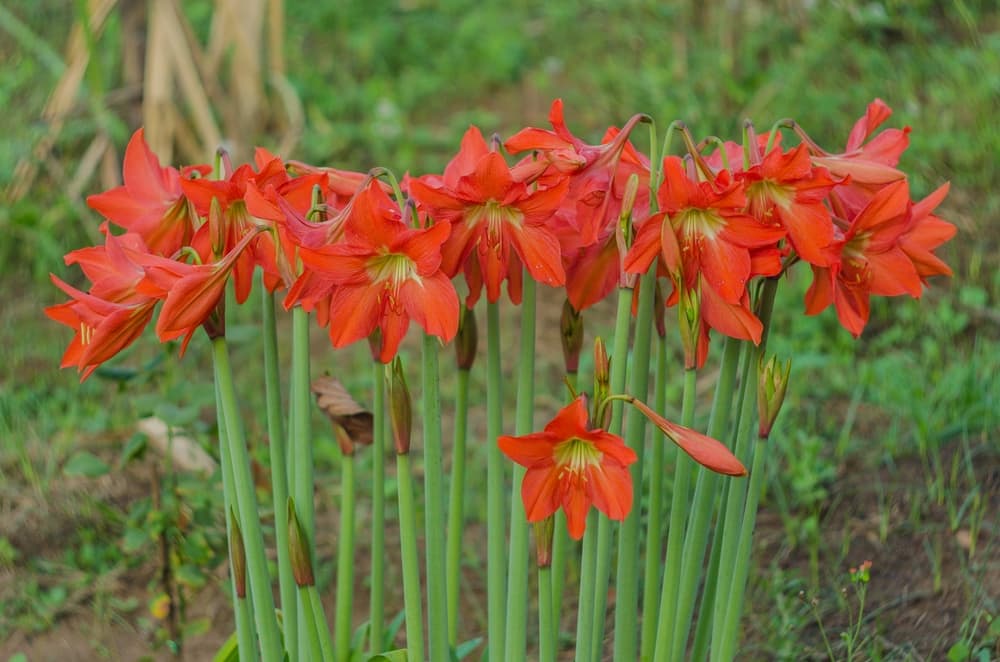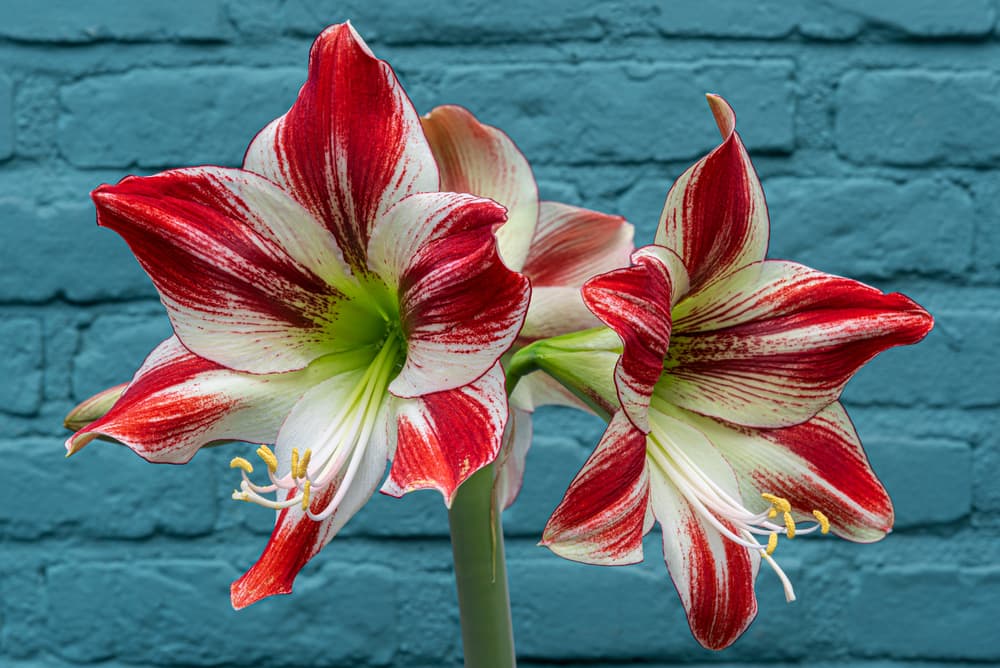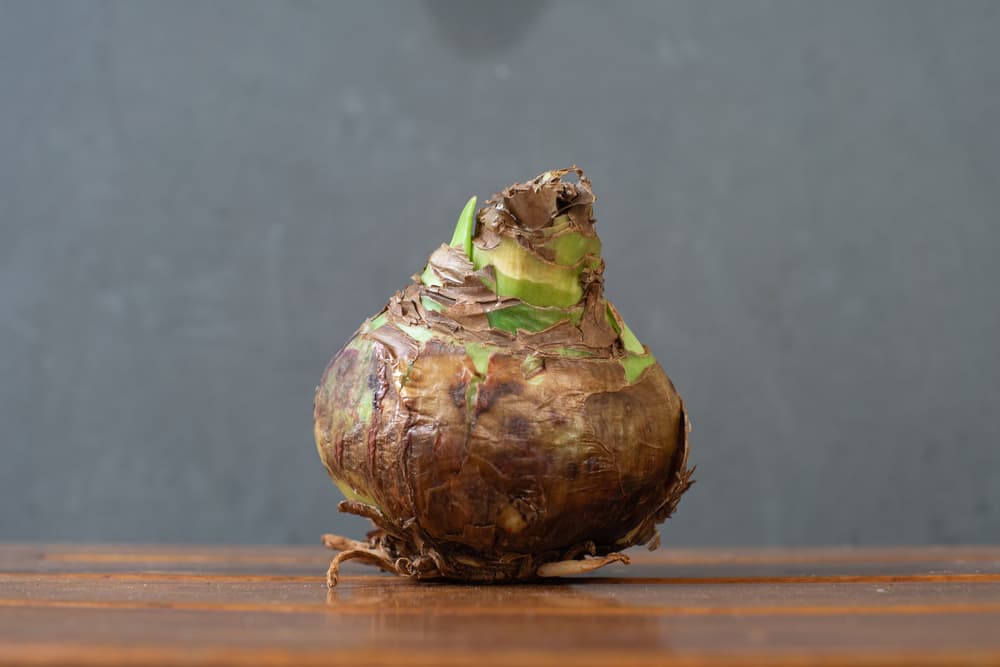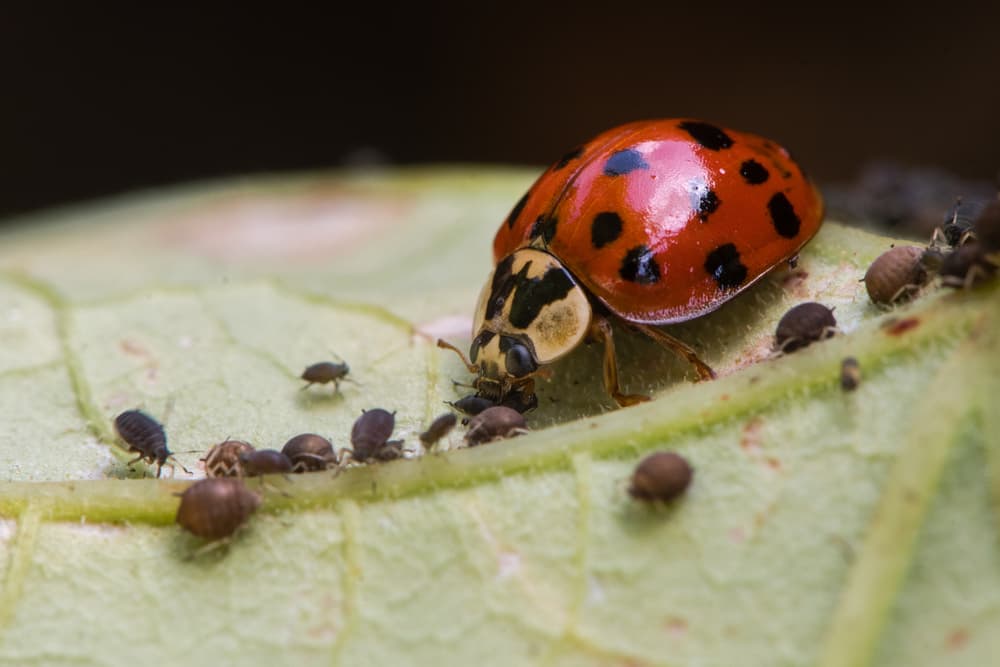HOUSEPLANTS > AMARYLLIS
Reviewed By COLIN SKELLY

Colin is a Horticulturist and Horticultural Consultant with experience in a range of practical and managerial roles across heritage, commercial and public horticulture. He holds the Royal Horticultural Society’s Master of Horticulture award and has a particular interest in horticultural ecology and naturalistic planting for habitat and climate resilience.
IN THIS GUIDE
The Amaryllis plant, often considered a type of lily, is a wintertime favourite.
Correctly called Hippeastrum, this houseplant bears colourful blooms in the form of a bell with its six tapered petals giving it a star shape.
They come in a range of striking and brilliant hues. Some are two-toned, others have a central blaze, or even delicate veining.
Eye-catching, charming, dazzling – all these adjectives and more can truthfully be applied to one or another species or cultivar of this ever-popular indoor plant.

The amaryllis, a bulbous perennial, brightens up many homes during the festive season as it has the felicitous facility of flowering right around Christmas.
The bulb can be induced into dormancy at any time after blooming.
Similarly, it can also be ‘timed’ to bear flowers at the most suitable period by re-planting the bulb six to eight weeks before you want it to flower.
Nurseries have long been selling amaryllis cultivars during November with the bulbs primed or ‘forced’ to flower in late December.
Overview
| Botanical Name | Hippeastrum |
| Common Name(s) | Amaryllis |
| Plant Type | Bulb / Perennial Flower |
| Native Area | South America |
| Hardiness Rating | H1-H2 |
| Foliage | Slightly fleshy strap leaves |
| Flowers | Large, funnel-shaped blooms in various hues |
| When To Sow | January, October, November, December |
| Flowering Months | January, February, March, April, December |
Sunlight
Preferred
Full Sun / Partial Shade
Exposure
Sheltered
Size
Height
0.1 – 0.5M
Spread
0.1 – 0.5M
Bloom Time
December – April
Soil
Preferred
Most Soil Types
Moisture
Moist but well drained
pH
Any
Native to South America, Hippeastrum species have been cultivated, crossed, and bred for a few centuries to create an amazing array of flowers.1Hippeastrum aviflorum. (n.d.). Kew Royal Botanic Gardens. Retrieved March 9, 2023, from https://powo.science.kew.org/taxon/urn:lsid:ipni.org:names:993998-1
Most amaryllis plants are easy to grow and maintain indoors which is yet another reason for their popularity.
If the bulb is treated with care, it will produce flowers for many years.
Common Varieties
To begin with, Hippeastrum is a genus with over 90 species to which one must add the 600-plus hybrids and cultivars of amaryllis that derive from Hippeastrum species.2Hippeastrum Herb. (n.d.). Global Biodiversity Information Facility. Retrieved March 9, 2023, from https://www.gbif.org/species/144107351
We outline a mere handful of the notable ones below –

Hippeastrum papilio is a Brazilian species whose flowers are of an odd yet riveting colour combination. The outer parts of the tepals are a varying but light shade of green while the inner part ranges from carmine to maroon, often with striations.
Bearing distinctly trumpet-shaped flowers of a soft vermilion hue, Hippeastrum miniatum is a decorative enough species so as to contend with the showiest of cultivars.
Peruvian-Bolivian native Hippeastrum pardinum bears flowers which are star-shaped and open, with the reddish freckles and spots on yellowish tepals making it one of the most beguiling blooms.

Hippeastrum puniceum commonly called Barbados Lily also has open, star-shaped flowers; their colour ranges from pale orange to vermilion, with a central splash of yellow to make for the prettiest of flowers.
Giving the Barbados Lily species heavy competition is the ‘Orange Sovereign‘ cultivar; a variety whose flowers are of a single solid hue. The simplicity of the colour scheme and the deep flame colour combine to make for an eye-catching flower.

‘The Red Lion’ has flowers with a rounded contour and its tepals are curved and mounded, and of a crimson hue. It is a very luxurious cultivar.
‘Minerva’, not dissimilar in shape to ‘Red Lion’, is of a more sedate shade of red but, unlike ‘Red Lion’, it has a blaze and lengthwise bands of white, making it one of the most charming cultivars.

‘Candy Floss‘, true to its name, is of a candy floss pink except that this well-balanced flower’s colour comprises of many hues and tints of pink in streaks, striations, and veins.

Plump, well-rounded tepals bearing red dots and spots and daubs on a white background make the ‘Flamenco Queen‘ appear voluptuous yet shy and vulnerable.
The ‘White Peacock‘ – an obvious contradiction in terms – though a ‘double flower,’ has three sets of tepals. Pure white, it conveys both restraint and elegance.

The ‘Viridi Rascal‘ is also white but this single flower has vivid red striations and red edging on its tepals combined with gentle ridging, with the overall effect one of delicate beauty.
The vast range of the species and cultivars of this delightful plant means that regardless of your taste, there is a feast for the eyes and a treat for the senses for every flower enthusiast.
Habitat & Growing Conditions
Hippeastrum occurs in nature mainly in the tropical and sub-tropical regions of South America.
Different species prefer their own place in the sun – or the shade!
That is, Hippeastrum species range in preference from full sun to mostly shade.

A few like damp soil and others occur in dry earth with most species preferring areas with regular rainfall but good soil drainage.
Hardiness
As a garden plant, amaryllis cultivars are hardy in USDA Zones 8 through 11 (RHS Zones H1C – H5) though some, like Hippeastrum x johnsonii, are hardy down to USDA Zone 5 (RHS Zone H7).
A cultivar may perish during a freeze or a frost – most cultivars do best in screened sun or morning sun.
The most important requirement is that the soil must drain well and not retain any water.
You can transfer your garden amaryllis indoors for the winter by simply removing the bulb from its bed at the beginning of autumn and inducing dormancy by keeping it in a cool, dark place without water or fertiliser for two to three weeks and then re-planting it in a pot.
Hippeastrum Care
Though Hippeastrum makes a lovely addition to any garden, our guide treats it as a houseplant.
If you plant a cultivar outdoors simply adapt the guidelines accordingly.
Use a largeish flower-pot because amaryllis plants are, to some or another degree, top-heavy.
Aim for a room temperature of 20-21°C and place the pot where it will get four to six hours of sun daily.
Soil Requirements
The best soil pH range for amaryllis is between 6 and 7.
Master Horticulturist Colin Skelly advises: “For many potted bulbs I usually use a peat-free John Innes no.2 growing medium (the name of the ‘recipe’ rather than the producer – it is sold by different companies).”
“This has added grit for drainage but also good nutrient content and moisture retention – perfect for most bulbs in pots.”
The soil should be composed of about one-third perlite or gravel and two-thirds of some combination of peat moss, loam, or compost.
Plant the bulb so that about one-third of it is above the soil; it is imperative that the nose not be covered by soil.
It is just as imperative that the soil drains properly.
Watering & Feeding
Upon planting the bulb immediately water it thoroughly and thereafter water it lightly or moderately every few days.
As leaves and stalks sprout, watering should gradually be increased in amount and frequency, and fertilise every two months with a 10-10-10 houseplant fertiliser keeping in mind that it is worse to over-fertilise amaryllis than to under-fertilise it.
A good rule of thumb is to water when the topsoil is dry to the touch, to water once or twice a week, and to try to keep the soil just moist but never wet.

Plant the bulb in October to enjoy blooms during the holiday season.
Common Problems
Bulb Rot
Hippeastrum is vulnerable to various diseases – where bulb rot is concerned, prevention is better than cure.
Assuming healthy bulbs, the only causes for this disease are overwatering, waterlogged soil, and poor drainage.
Therefore, if you make sure not to overwater and also ensure that your soil drains well, you eliminate bulb rot.

Pests
Pests like mealybugs, aphids, mites, grasshoppers, and bulb maggots can attack the plant with mealybugs being the most common houseplant pest.
Grasshoppers lay egg pods beside amaryllis bulbs.
These hatch in spring and cover the plant.
Here too, prevention is the better option.
Keep checking your plants for these pests and if you observe them, dislodge the smaller pests with blasts of water and remove grasshoppers by hand.
If the problem persists, use an insecticidal soap solution.
Dilute to specifications and spray on the plant.

If your mealybug-infested plant is in the garden, you can release beneficial insects like ladybugs – these prey upon mealybugs.
Aphids are perhaps the most dangerous of pests because they breed rapidly and in numbers, and cause irreversible harm to the plant.
“If you spot an aphid infestation, use an insecticidal soap and/or blast off with water,” adds Colin.
Bulb mites are more difficult to spot for obvious reasons.
A side benefit of annual removal of the bulb from the soil and later re-planting is that you can inspect the bulb for mites (and other pests or disease, bruising, and onset of rot).
Red Blotch
A relatively common disease is Red Blotch which is caused by a fungus.
Initially manifesting itself as its name, the blotches enlarge into cankers near the base of the plant.
To overcome Red Blotch try using Neem Oil diluted to 1% (Neem has anti-fungal properties).
Because Neem Oil is sold in different concentrations measured in ppm, it is a better idea to buy readymade Neem insecticide for houseplants, if you can find it.
Apply it for seven days continually – if you have reason to suspect that Red Blotch may strike your Hippeastrum, you can spray Neem insecticide as a preventative.
References
- 1Hippeastrum aviflorum. (n.d.). Kew Royal Botanic Gardens. Retrieved March 9, 2023, from https://powo.science.kew.org/taxon/urn:lsid:ipni.org:names:993998-1
- 2Hippeastrum Herb. (n.d.). Global Biodiversity Information Facility. Retrieved March 9, 2023, from https://www.gbif.org/species/144107351


